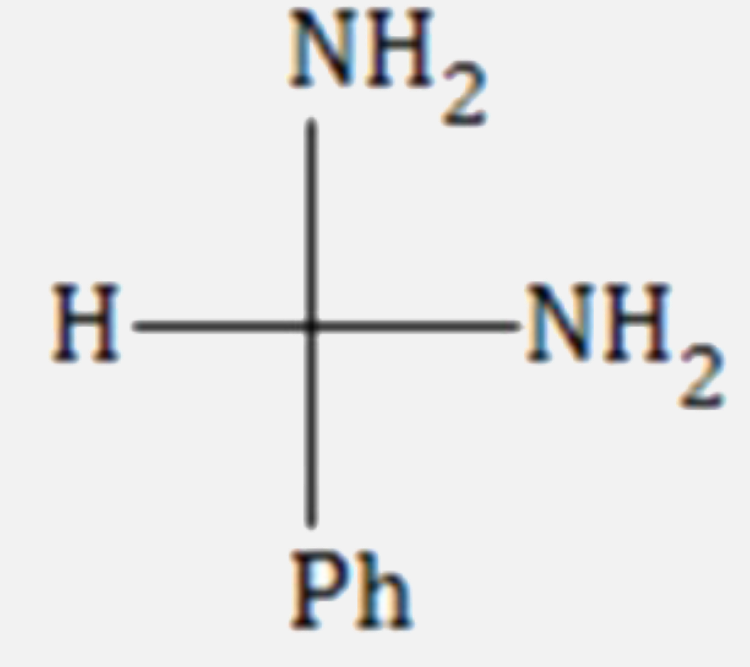Cyanohydrin of which of the following compound can forms lactic and
CH3CH2CHO
CH3CHO
HCHO
CH3COCH3
The correct Answer is:B
To solve the question of which compound can form lactic acid via cyanohydrin formation, we will follow these steps:
1. Understand the Structure of Lactic Acid:
Lactic acid has the structure CH3-CHOH-COOH. It consists of three carbon atoms, one hydroxyl group (-OH), and one carboxylic acid group (-COOH).
2. Identify the General Structure of Cyanohydrin:
The general structure of a cyanohydrin is R-CHOH-CN, where R can be a hydrogen or an alkyl group. The cyanohydrin contains a carbon atom bonded to both a hydroxyl group and a cyanide group.
3. Determine the Number of Carbons Needed:
Since lactic acid has three carbon atoms, we need to ensure that the cyanohydrin we choose can provide the necessary carbon atoms to form lactic acid.
4. Analyze the Given Options:
- Check each compound option to see how many carbon atoms they provide when forming a cyanohydrin.
- The compound must provide two additional carbon atoms to the one from the cyanohydrin to total three carbons.
5. Select the Correct Compound:
- After analyzing the options, identify which compound can yield the required three carbon atoms when reacted with HCN (hydrogen cyanide).
- For example, if one of the options is acetaldehyde (CH3CHO), it has two carbons. When it reacts with HCN, it forms a cyanohydrin (CH3-CHOH-CN) which can then be hydrolyzed to form lactic acid.
6. Confirm the Reaction:
- The reaction of the cyanohydrin with water (hydrolysis) will yield the corresponding carboxylic acid (in this case, lactic acid) and regenerate the hydroxyl group.
7. Final Answer:
- The correct option that can form lactic acid is the one that provides the necessary carbon atoms when reacted with HCN.
Conclusion:
The answer to the question is option B, which corresponds to the compound that can yield lactic acid through the cyanohydrin mechanism.
Lactic acid has the structure CH3-CHOH-COOH. It consists of three carbon atoms, one hydroxyl group (-OH), and one carboxylic acid group (-COOH).
The general structure of a cyanohydrin is R-CHOH-CN, where R can be a hydrogen or an alkyl group. The cyanohydrin contains a carbon atom bonded to both a hydroxyl group and a cyanide group.
Since lactic acid has three carbon atoms, we need to ensure that the cyanohydrin we choose can provide the necessary carbon atoms to form lactic acid.
- Check each compound option to see how many carbon atoms they provide when forming a cyanohydrin.
- The compound must provide two additional carbon atoms to the one from the cyanohydrin to total three carbons.
- After analyzing the options, identify which compound can yield the required three carbon atoms when reacted with HCN (hydrogen cyanide).
- For example, if one of the options is acetaldehyde (CH3CHO), it has two carbons. When it reacts with HCN, it forms a cyanohydrin (CH3-CHOH-CN) which can then be hydrolyzed to form lactic acid.
- The reaction of the cyanohydrin with water (hydrolysis) will yield the corresponding carboxylic acid (in this case, lactic acid) and regenerate the hydroxyl group.
- The correct option that can form lactic acid is the one that provides the necessary carbon atoms when reacted with HCN.
The answer to the question is option B, which corresponds to the compound that can yield lactic acid through the cyanohydrin mechanism.
Topper's Solved these Questions
Similar Questions
Knowledge Check
Which of the following compounds can form a zwitterion ?
ABenzoic acidBAcetanilideCAnilineDGlycineWhich of the following compounds can form a Zwitter ion ?
ABenzoic acidBAcetanilideCAnilineDGlycineWhich of the following compounds can form a Zwitter ion ?
A B
B C
C D
D
Which of the following compound are meso forms ?



View SolutionWhich of the following compound can form hydrogen bonds
View SolutionWhich of the following compounds are meso forms ?

View SolutionWhich of the following compounds can form hydrogen bond?
View SolutionWhich of the following compounds are meso forms?

View Solution
